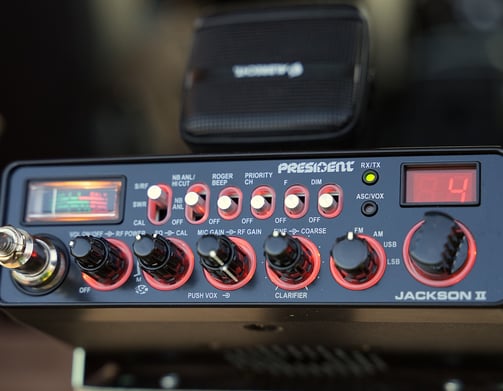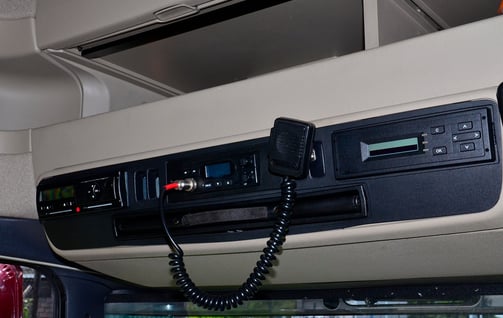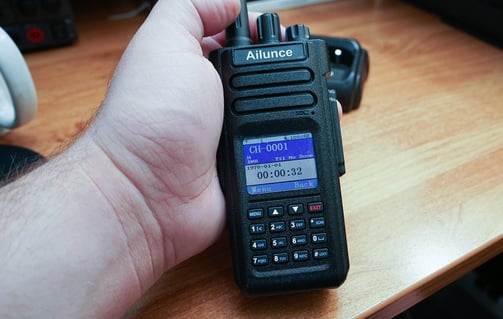Emergency Radio Frequencies
Citizens Band
Citizens Band (CB) radio is a short-distance, two-way radio communication system used by individuals and businesses for various purposes, including trucking, off-roading, and general communication. CB radios operate on 40 specific channels within the 27 MHz band.
Here are the commonly used CB radio frequencies (channels) in the United States:
Channel 1: 26.965 MHz Channel 2: 26.975 MHz Channel 3: 26.985 MHz
Channel 4: 27.005 MHz Channel 5: 27.015 MHz Channel 6: 27.025 MHz (The "Superbowl" channel, often used for emergencies)
Channel 7: 27.035 MHz Channel 8: 27.055 MHz Channel 9: 27.065 MHz (The emergency calling channel)
Channel 10: 27.075 MHz Channel 11: 27.085 MHz Channel 12: 27.105 MHz Channel 13: 27.115 MHz Channel 14: 27.125 MHz (The most widely used channel) Channel 15: 27.135 MHz Channel 16: 27.155 MHz Channel 17: 27.165 MHz Channel 18: 27.175 MHz Channel 19: 27.185 MHz (The trucker channel, often used for traffic information) Channel 20: 27.205 MHz Channel 21: 27.215 MHz Channel 22: 27.225 MHz Channel 23: 27.255 MHz Channel 24: 27.235 MHz Channel 25: 27.245 MHz Channel 26: 27.265 MHz Channel 27: 27.275 MHz Channel 28: 27.285 MHz Channel 29: 27.295 MHz Channel 30: 27.305 MHz 72 Channel 31: 27.315 MHz Channel 32: 27.325 MHz Channel 33: 27.335 MHz Channel 34: 27.345 MHz Channel 35: 27.355 MHz Channel 36: 27.365 MHz Channel 37: 27.375 MHz Channel 38: 27.385 MHz Channel 39: 27.395 MHz Channel 40: 27.405 MHz
Channel 9 is commonly used as the emergency calling channel, and channel 19 is frequently used by truckers for general communication and traffic updates. However, you can use any of the 40 channels for communication, but it's essential to be aware of the regulations and etiquette for CB radio usage to ensure clear and respectful communication with others on the airwaves.


Emergency frequencies for ham radio
Emergency frequencies on ham radio vary depending on the region and the specific emergency response organizations involved. However, there are some commonly recognized ham radio frequencies and bands that may be used during emergencies. It's important to note that ham radio operators should always follow local regulations and guidelines and coordinate with local emergency services when necessary. Here are some emergency frequencies and bands often used by ham radio operators: 2 Meters (144-148 MHz): This band is commonly used for local emergency communication and is often referred to as the "two-meter band." The following frequencies are commonly used for emergency communication: ● 146.520 MHz: The national calling frequency for 2 meters in the United States. ● 146.400 MHz: Often used for emergency communication and coordination. ● 146.625 MHz: Another common emergency frequency. 70 Centimeters (420-450 MHz): This band is used for local and regional emergency communication, often referred to as the "70-centimeter band." Some frequencies in this band include: ● 446.000 MHz: The national calling frequency for 70 centimeters in the United States. ● 446.150 MHz: Commonly used for emergency communication. HF (High-Frequency) Bands: HF bands are used for long-distance and regional emergency communication. Specific frequencies and bands within the HF range can vary, but the following are commonly used during emergencies: ● 3.965 MHz: Often used for Emergency Operations Centers (EOCs) and regional coordination. ● 7.268 MHz: Another HF frequency for regional or long-distance emergency communication. 69 ● 14.300 MHz: A commonly monitored frequency for international emergency communication. APRS (Automatic Packet Reporting System): APRS is a digital mode used for tracking and sending data, including location information and weather data. It operates on various VHF and UHF frequencies, and APRS emergency beacons are often used during disasters. Satellite Communication: Some ham radio operators use satellite communication frequencies, such as those available through amateur radio satellites, for emergency communication when terrestrial infrastructure is compromised. Local and Regional Nets: Many areas have established local and regional emergency nets on various bands and frequencies. These nets are often activated during emergencies to coordinate communication among ham radio operators. Remember that during emergencies, ham radio operators should always cooperate with and follow the guidance of local emergency services and authorities. Ham radio is an invaluable resource for emergency communication, but it should be used in a coordinated and responsible manner to support emergency response efforts.


Amateur Radio Emergency Frequencies
Amateur Radio Emergency Frequencies: Amateur radio operators (ham radio) play a significant role in emergency communication. While amateur bands cover a wide range of frequencies, some common bands and frequencies for emergency communication include: ● 3.985 MHz: The International Emergency Frequency in the 75-meter amateur band. ● 7.060 MHz: The primary frequency for the Winlink Global Radio Email system used for emergency messaging. ● 14.300 MHz: The 20-meter band often used for international emergency traffic. ● 18.160 MHz: The 17-meter band used for emergency communication. Global Disaster Emergency and Coordination Networks: ● 5.330 MHz: The Global Disaster Emergency and Coordination Network (GDXC) often used for coordination during disasters. International Amateur Radio Union (IARU) Emergency Center of Activity Frequencies: ● IARU Region 1: 7.110 MHz, 14.300 MHz, 18.160 MHz ● IARU Region 2: 7.110 MHz, 14.300 MHz, 18.160 MHz ● IARU Region 3: 7.110 MHz, 14.300 MHz, 18.160 MHz UN World Food Programme (WFP): ● 13.000 MHz: WFP often operates on this frequency during emergencies. Radio Amateurs in Civil Emergency Service (RACES): ● Frequencies in the 40, 80, and 160-meter bands may be used by RACES organizations for local and regional emergency communication. Please note that the availability of these frequencies and the organizations using them may change depending on the region and the specific emergency situation. During an emergency, it's essential to monitor and cooperate with local, national, and international authorities and organizations for the most up-to-date information on frequencies and procedures.


